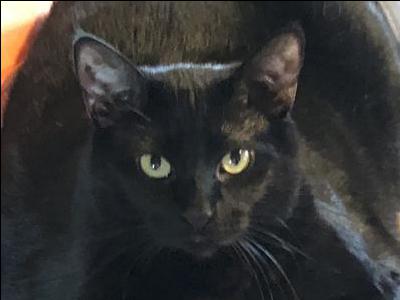Two newly adopted cats won't use their litter box
by Fred
(Baltimore, MD)
Hi! I adopted two 9 month old male kittens (brothers) just over 24 hours ago. I thought everything was going fine, but I'd never seen either one of them use the litter boxes, and never saw any evidence in the litter boxes as well.
I hadn't found any evidence of urination or defecation in the apartment until this evening when I came home after being out for about an hour to find my bedsheets SOAKED with urine! I've had cats numerous times in the past, and have never, ever had any problems with them not using their litter boxes.
Since this is a first for me, I am REALLY confused. I'm not angry with the poor little fellows, of course, just really frustrated because I have no idea what to do next or how to prevent this from happening again. PLEASE HELP!!!!!
My Thoughts:
First off, Fred, thank you for adopting these cats! Second, I'm sorry to hear about your experience. That sounds quite nasty!
I'm assuming that you adopted these kitties from a shelter or rescue, and that at nine months old, they've already been neutered, and that they checked out medically 100 percent at the veterinarian.
Sometimes we assume that cats that come from shelters are fully healthy, and that's not always the case, even if they've just been checked by the vet.
They're also very stressed. Younger cats deal with it better than adults, usually, but by the time a nine month old kitten comes home with you, they've usually been through a lot in their little lives.
Remember... cats hate change! Unless, of course, they choose to make the change. So, I should say that cats hate forced change. They need time to acclimate to their new environment, and time to decompress.
I'm further assuming that you have no other pets in the house, so this is not a reaction to that.
The first thing I do when I bring cats home is confine them to a small-ish space with a litter box on one end and food and water bowls on the other. They get lots of visits and attention, play
Once they're used to that space and their litter box habits are in place (no "accidents"), then I let them out into a bigger space and let them explore. I observe them and give them attention and reassurrance as they learn about their new environment.
I keep the original litter box in place (they're used to it now so you don't want to disturb things) and possibly add a second one in the bigger space.
If litter box problems develop at this point, we go back to the smaller space and try again. If all is well, the cats get access to more and more of the house.
I keep old litter boxes in place temporarily, and as I set up the "permanent" ones I make sure they're fully aware of them by placing them in each box after setting them up. With two cats, I'd ultimately have three boxes, possibly more on a multi-level or large home.
This process can take several days or more than a week, depending upon circumstances. If there are other pets in the house this process gets complicated a bit as we need a quarantine period as well as slow introductions. Sometimes keeping your existing pets out of the room is the hardest part.
Is this approach overly cautious? Yes, but it ensures a low stress transition for the cats and proper box training.
Do some people bring a new cat home, give them the run of the place and have no problems? Sure, but you never know how a cat, or any animal, will behave. The way you introduce your cat to your home or to other pets can set the tone for the remainder of their lives.
The good news is, cats often imitate their siblings or house mates, so if one of the cats starts using the box regularly, the other may quickly follow. Yes, they truly are copy cats.
Does that help?
-Kurt
If anyone else has any ideas or has a better approach, let's hear it!
Comments for Two newly adopted cats won't use their litter box
|
||
|
||
|
||
|
||
|
||
|
||
|
||
|
||
|
||
|
||
